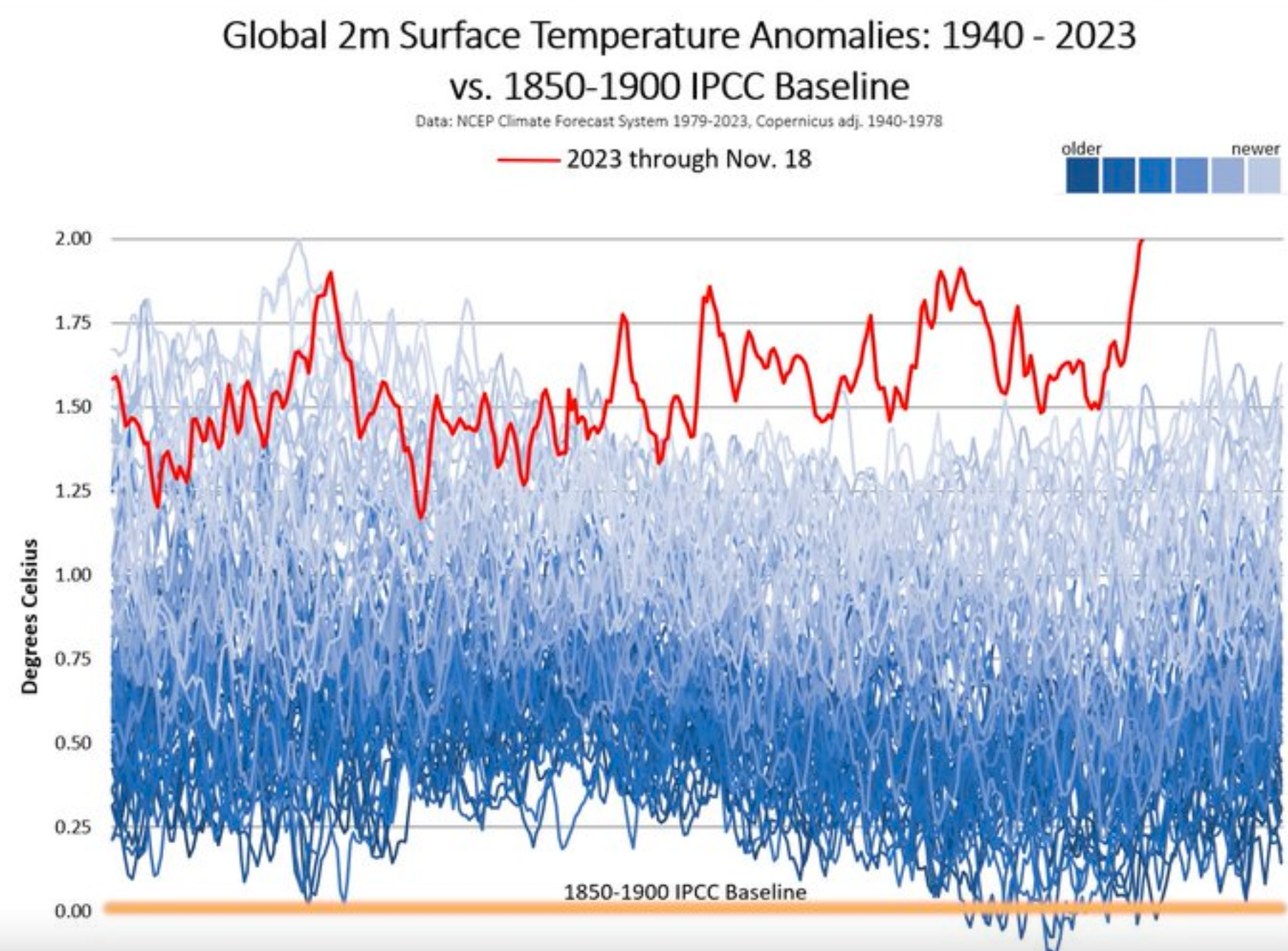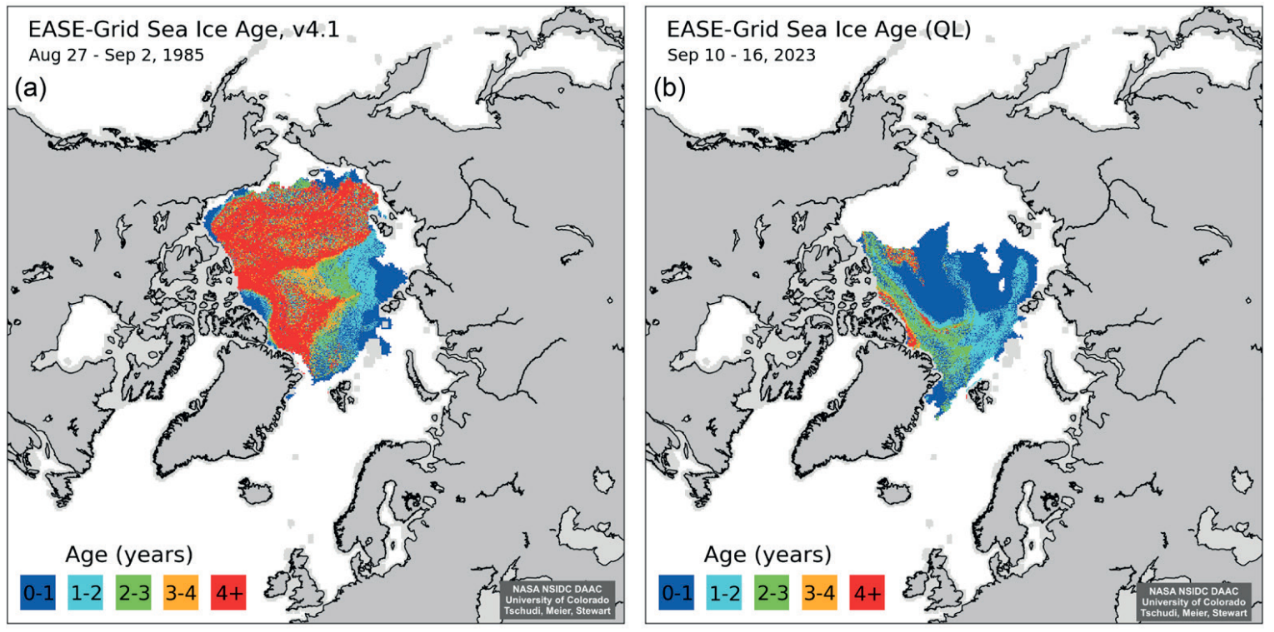
Columnists
Arctic
The disappearance of the red bar reveals the real problem
Jonathan Jeppsson
News and dig manager
This is a commenting text. Analysis and positions are the writer's.
Updated 11.03 | Published 10.45

During Saturday, a temperature of two degrees above pre-industrial levels was measured for the first time.
Saturday was a historic day – for the first time we broke two degrees.
In a Brazil plagued by heat, Taylor Swift was forced to cancel a concert.
The red field that has disappeared in the Arctic gossips about an unpleasant development.
These are strange days. In Brazil, the heat has been so intense that world star Taylor Swift was forced to cancel a concert. "The safety and well-being of my fans, my fellow artists and my team always comes first," the singer said in a statement after one of her fans, a young woman, died before one of the concerts in Rio de Janeiro.
Brazil's Meteorological Institute has repeatedly recorded temperatures above 40 degrees, with 42.6 being the highest for Rio. Brazil, like much of the rest of the world, has had to watch temperature records fall on a conveyor belt in recent months.
At the same time, reports from the summer are brought to life, that Taylor Swift tops the list of celebrities who fly the most by private jet and thus emit the most carbon dioxide. British sustainability firm Yard claimed the superstar's jet took off 170 times between January 1 and July 19, resulting in emissions of 8,293 tonnes - 1,185 times more than the annual average of a world citizen.
This is also how the climate dilemma can be described in a single picture.

Taylor Swift during a concert in Chicago in June. Photo: Tribune Content Agency Llc/Alamy
Two degrees overplayed
At the same time, a report came out this week - State of the cryosphere - about how important it is that we stick to the 1.5 degree target.
Two degrees, the upper limit set in Paris, will lead to extensive, irreversible sea level rise from the Earth's ice sheets, according to the 60 scientists behind the compilation.
A convincing number of new studies all point to the fact that the threshold for development to run away for both Greenland and parts of Antarctica is well below two degrees.
At two degrees, we can expect a long-term sea level rise of between 12-20 meters.
Crossed a threshold
Thus the landscape has changed. The scenery has been swept away and it is already clearly visible. The report describes how the ice in the Arctic has lost thickness over the past 30–40 years.
Take a look at the maps of the Arctic here in the article. The red fields show ice older than four years - 35 years ago it was dominant, now only crumbs remain.
Instead, three-quarters of the Arctic sea ice is now made up of first-year ice, which largely melts each summer; the "older" ice that exists is only between one and three years old on average.
Arctic sea ice crossed a threshold already in 2005–2007, when half of the Arctic's thick multi-year ice disappeared. It has never recovered and it looks like it won't for the foreseeable future. On the contrary.
Even with low emissions, the latest forecasts show a continued sea level rise for many centuries. It is only "very low" emissions and the fact that you are buzzing at 1.5 degrees that keep the large ice sheets alive.

Therefore, it is with bitter irony that one can state that yesterday for the first time we measured a temperature of two degrees above pre-industrial times.
We are beginning to approach the temperatures of the Eem, a warm period between two ice ages that began 130,000 years ago. Sea levels were then at least five meters higher than today. This is the trajectory we are on, given that carbon dioxide levels in the atmosphere are the highest they have been in three million years.
The very low emissions required – peaking at 1.6 degrees and declining thereafter – mean the world must reduce its emissions by 43 percent from 2019 levels by 2030, according to the State of the cryosphere report.
Distributed water
At Taylor Swift's concert in Rio de Janeiro, she tried to pass out water bottles to those in need in the audience from the stage. Then I guess she flew on - and what's a pop star on a world tour to do but fly around the world?
We are all more or less like Taylor Swift, not least our politicians. The safety and well-being of our loved ones always comes first.
But a water bottle in hand won't go far in the future.
Inga kommentarer:
Skicka en kommentar